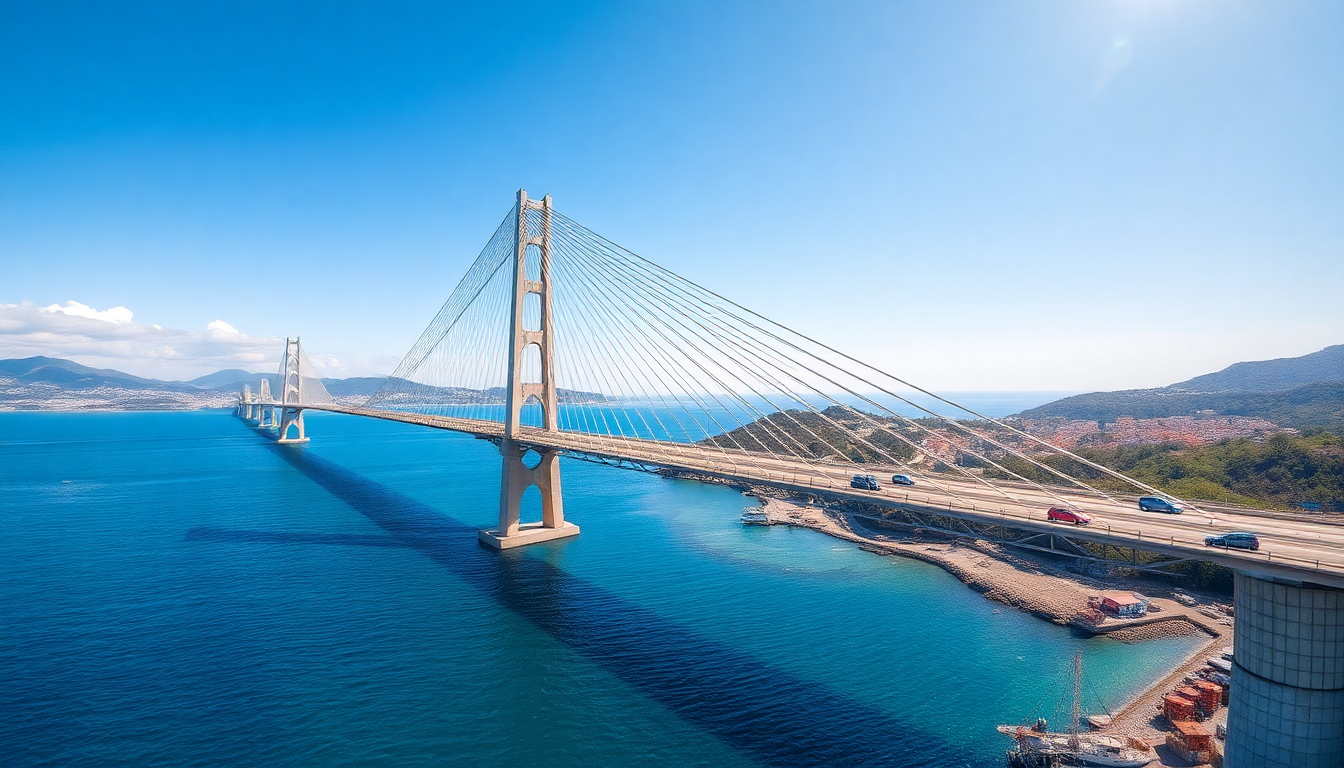Table of Contents
As NATO raises the bar on defense spending, Italian leaders are pushing to label a long-discussed infrastructure project—the Messina Bridge—as a military expense. This ambitious endeavor, with a staggering price tag of €13.5 billion, aims to link Sicily to the mainland, and it’s being touted as a vital asset for Italy’s defense capabilities. But here’s the burning question: does this project truly fit into Europe’s military strategy?
The Context of Italy’s Defense Spending
Italy has often found itself trailing its NATO allies when it comes to defense spending, contributing just 1.49% of its GDP last year. With NATO’s new target aimed at a hefty 5% by 2035, the challenge is crystal clear. Supporters of the Messina Bridge argue that it has the potential to serve dual purposes—fostering economic growth while bolstering military readiness. Under Giorgia Meloni’s leadership, the Italian government is rekindling interest in this grand project, which has been on the drawing board for decades, harkening back to Mussolini’s time.
Deputy Prime Ministers Antonio Tajani and Matteo Salvini are vocal about the bridge’s strategic significance, presenting it as crucial for NATO operations rather than just another infrastructure upgrade. This viewpoint has gained traction following a government report suggesting that tagging the bridge as a military initiative could pave the way for its funding and construction. This aligns with NATO’s flexible spending guidelines, allowing a portion of the budget to be directed towards broader resilience efforts, including infrastructure.
Strategic Implications of the Bridge Project
The Messina Bridge isn’t just another construction project; it could dramatically affect Italy’s military logistics. By improving connectivity, it would allow for the rapid movement of troops and equipment—essential for tackling various geopolitical challenges. The Italian Treasury has indicated that designating the bridge as a military project might help navigate historical challenges, like cost overruns and bureaucratic hurdles, that have stalled its progress.
However, not everyone is on board with this vision. Opposition parties are raising eyebrows about the bridge’s necessity, arguing that it distracts from urgent local infrastructure needs. Critics point out the glaring disparities in investment, claiming that the regions served by the bridge are lacking in adequate transport systems and are grappling with socio-economic issues. They contend that addressing these local challenges should take precedence over grandiose infrastructure plans.
Future Prospects and Political Ramifications
As the debate heats up, the political ramifications of the Messina Bridge project are becoming increasingly evident. For Meloni’s administration, framing the bridge as a linchpin of national security could rally public support for defense spending, particularly in a climate of austerity. The project appears to be a potential unifier in Italy’s political arena, with Salvini seeking to extend his party’s reach beyond traditional bases.
The government’s aim for final approval by July signals a determination to push ahead, despite the mixed reactions from opposition leaders and segments of the public. While the bridge could indeed mark a significant advancement in military logistics, it’s essential to consider whether it can balance the immediate infrastructural needs of the Sicilian community with broader strategic goals.
In conclusion, the Messina Bridge project highlights the intricate relationship between infrastructure development and military strategy in Italy. As discussions progress, the real challenge will be finding a way to juggle ambitious national objectives with the pressing concerns of local residents, ultimately deciding whether this bridge becomes a beacon of progress or a flashpoint in Italy’s socio-political landscape.


